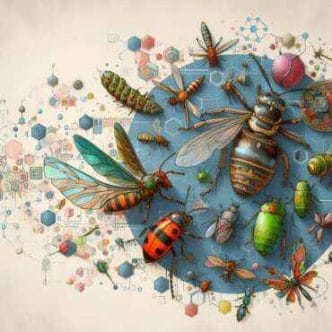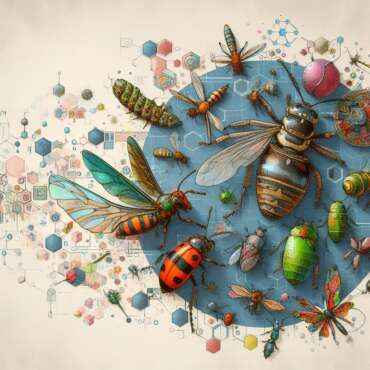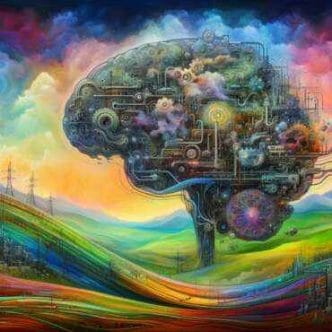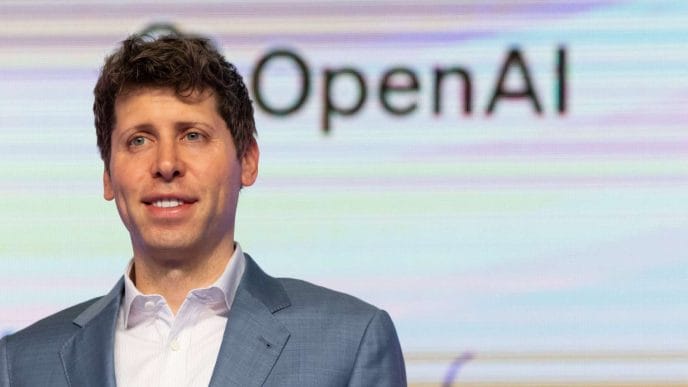Insect species around the world are estimated to comprise about 80% of all animals on our planet. Losing them could thus lead to collapse of the overall ecosystem, and impact us humans too. In a bid to partly address the issue, data, and artificial intelligence (AI) experts from Capgemini along with Naturalis Biodiversity Centre and Amazon Web Services (AWS) have developed AI models that automate the identification of insects through sound recognition. Capgemini hopes that the models will eventually enable scientists to analyse terabytes of information within just 24 hours.
AI technologies have the potential to provide valuable insights into biodiversity changes, detect and attribute causes to those changes, and help prioritize and plan conservation efforts.
Insects play a critical role in the global ecosystem. They can be pollinators, indicators of an ecosystem’s health, and even a source of food for larger animals. The insect population, on its part, is increasingly being impacted by changes in land use, pesticides, urban developments, and shifts in climate. However, monitoring insects is an incredibly hard task, and it cannot be done reliably by humans. Image recognition, while it works for some species, too cannot detect species that are inconspicuous to the human eye.
It is here that sound or acoustic recognition plays a crucial role. Together with traditional and camera-based monitoring, acoustic recognition provides new insights that allow for identification of insect species that would otherwise go undetected, enabling scientists to monitor and conserve these vital populations.
The AI solution described above was developed as part of Capgemini’s sixth Global Data Science Challenge for a sustainable future (GDSC), an annual company-wide initiative whereby every employee gets to harness their data and AI expertise in an attempt to solve a real-world issue. The team, in this case, developed an AI-based acoustic model that can identify different insect species with almost 92% accuracy.
How AI Monitors Sound
Sound acoustic monitoring by AI now complements visual monitoring and, in some cases, has even begun replacing it. The reason is that AI can analyses sound data of chainsaws or drills in seconds, and alert human patrolling vehicles about illegal logging, mining, and even conservation efforts. As an example, a social impact organization in French Polynesia called Coral Gardeners is using AI to assess coral restoration based on the reef’s shape and sound. It has partnered with two academic institutions — Cornell and University of Hawai’i — to pilot new aquatic bioacoustics and photogrammetry programmes to better assess the organization’s restoration efforts.
Coral Gardeners and the Cornell team created a bioacoustics AI model of the reef soundscape recorded by ReefOS, a network of sensors and cameras collecting continuous data at the Maharepa and Cook’s Bay nurseries. The University of Hawai’i helped Coral Gardeners to integrate advanced 3D mapping and photogrammetry (science of extracting information from photographs) into the monitoring process. By modelling the structure of the reef, the team can assess critical metrics such as biomass and coral growth rate to improve restoration methods.
 Image by Bing AI
Image by Bing AI
According to a July 2022 report by the Intergovernmental Science-Policy Platform on Biodiversity and Ecosystem Services (IPBES), one million species are headed for extinction. “With about 50,000 wild species used through different practices, including more than 10,000 wild species harvested directly for human food, rural people in developing countries are most at risk from unsustainable use, with lack of complementary alternatives often forcing them to further exploit wild species already at risk,” Jean-Marc Fromentin (France), who co-chaired the Assessment with Marla R. Emery (USA/Norway) and Prof. John Donaldson (South Africa), said when releasing the report.
Emery had added, “70% of the world’s poor are directly dependent on wild species. One in five people rely on wild plants, algae and fungi for their food and income; 2.4 billion rely on fuel wood for cooking and about 90% of the 120 million people working in capture fisheries are supported by small-scale fishing.” Given that one in five people depend on these species for food and income, this loss in wildlife will significantly impact humans.
Helping Conserve Biodiversity
Biodiversity loss and ecosystem collapse are also ranked as one of the biggest risks facing the world in the coming 10 years in the World Economic Forum’s Global Risks Report 2023. And it’s here that AI technologies have the potential to provide valuable insights into biodiversity changes, detect and attribute causes to those changes, and help prioritize and plan conservation efforts.
For instance, high-tech maps that use a combination of remote sensing, AI and statistical modelling can see where these species are and predict where they might be going, according to an article in the World Economic Forum. Scientists and policy experts from over 20 institutions created the Spatial Planning for Area Conservation in Response to Climate Change (SPARC) tool. SPARC uses supercomputers and global information system (GIS)-based mapping tools to build a global picture of the movement of all known plants, birds and mammals in response to climate change. Through it, governments can make crucial predictions about where climate change will impact species — helping them more effectively plan to conserve natural systems, even across country borders.

Another case in point is the Tech4Nature partnership created by the International Union for Conservation of Nature (IUCN) and technology company Huawei. It uses AI and blockchain to help monitor land and sea for potential biodiversity threats. Rainforest Connection (RFCx) and Huawei’s “Nature Guardian” project comprises solar-powered devices equipped with microphones and antennas that collect sound data and transmit the data through wireless networks to the cloud, where it is analysed by AI.
Each Guardian device is placed in the forest’s canopy and can operate 24 hours a day for two years, collecting ambient sound data over an area of three-square kilometres. An alarm is generated if the sound of a threat occurs, such as a chainsaw, truck, or gunshot. The alarm includes the location of the incident and is pushed to an app to ensure that local rangers can respond in near real time.
These Guardian devices can also facilitate research by yielding data about the behaviours and distribution of wildlife. In rainforests, the sounds cover a wider range than vision while taking up less network bandwidth. This allows authorities to collect real-time data from large protected areas. With wireless networks providing connectivity, the combination of AI and low-cost devices can provide precise and cost-effective solutions for safeguarding biodiversity, according to Huawei.
____________
Written By: Techquity India














